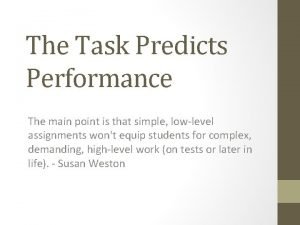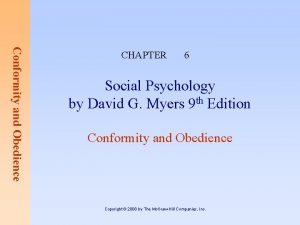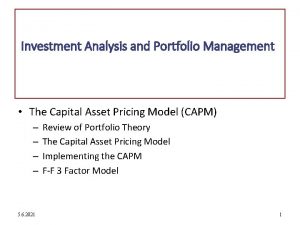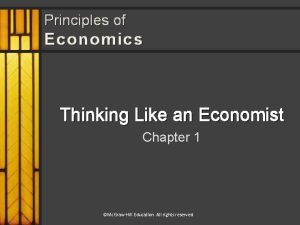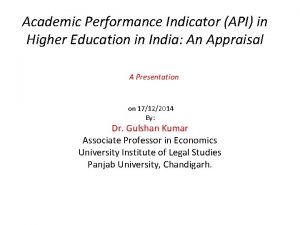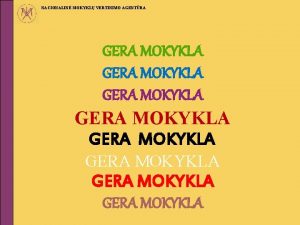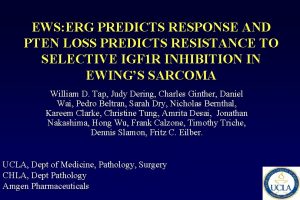Does Motivation Predicts Academic Performance Gera Noordzij EUC












- Slides: 12

Does Motivation Predicts Academic Performance? Gera Noordzij (EUC) 1

Motivation theories Learned Helplessness/Optimist Theory of Action Control Operante conditioning Social Learning Theory Expectancy‐Value Theories Control theory Drive reduction theorie Need Theory Self-regulatory focus Self-Determination Theory Achievement Goal Orientation Theory Goal-setting Theory Social Cognitive theory Theory of reasoned action Theory of Achievement Motivation Flow Psychoanalytic Theory of Planned Behavior Proactive personality construct Two factor Theory Attribution theory Equity Theory 2

Self-determination theory (Deci & Ryan, 2000) ‘ i I w Amotivation ‘ External motivation in g ex or t m pe he y rie p kn n le ow ce as le in ure dg b e’ roa I de n e av h I no a de hy r tte e b a ’ ve r on a h o late t r y de lar r o sa In ‘F y’ ud st e bl a lf’ p ’ e ca ree ys g m m ’ t I de op a l e th g ve lf olle e e d o ys y c t t m an to te m Iw ve ple o se pr om u o c ca ‘T to e ‘B Introjected motivation Controlled motivation Identified motivation Intrinsic motivation Autonomous motivation 3

Achievement goal (orientation) theory (Dweck, 1986; Elliot & Mc. Gregor, 2001; Van Yperen, 2006) Approaching Success Intrapersonal Interpersonal Mastery-approach Performance-approach Improving competences 34. 4% ‘In my study, I prefer challenging tasks that I can learn a lot from’ Avoiding Failure Mastery-avoidance Avoiding intrapersonal incompetence 33. 6% ‘I prefer to avoid situations in my study wher I might perform poorly’ Demonstrating competences 13. 7% ‘I enjoy it when other students are aware of how well I’m doing’ Performance-avoidance Avoiding interpersonal incompetence 18. 3% ‘In my study, I prefer to avoid failures in front of others’ 4

Longitudinal research Psychology and EUC • Stability and change in motivation (goals and reasons) to study • Motivation predictor of academic performance? • Procedure: – SDT (reasons) and AGT (goals): at the start (T 1), end first academic year (T 2) and end second year (T 3). – Grades, professional behaviour and N=N, 5

Academic motivation Orange =2011 Psych. Start Red = 2012 Psych. Green = 2013 EUC White = 2014 EUC Autonomous motivation: F = 2. 83, p <. 05 Controlled motivation: F = 0. 67, p >. 05 A-motivation: F = 8. 50, p <. 001 6

Achievement goals Start Mastery-approach F = 16. 01, p <. 001 Perf. -approach F = 2. 01, p >. 05 Perf. -avoidance F = 18. 99, p <. 001 Orange =2011 Psych. Red = 2012 Psych. Green = 2013 EUC White = 2014 EUC Mastery-avoidance F = 18. 51, p <. 001 7

Does it predict anything? • Psychologie: – N = N : A-motivation – Grades: A-motivation – Prof. behaviour: autonomous, controlled and amotivation • EUC ---- 8

Stability and Change (T 1 -T 2 -T 3) (Sample level) • Mean level change – – – – A-motivation: decrease Controlled motivation: curvilinear Autonomous motivation: stable Mastery-approach goals: increase Performance-approach: u-shaped Performance-avoidance goals: decrease Mastery-avoidance goals: decrease • Differential continuity • Academic motivation: . 57 • Achievement goals: . 46 9

Person-level 2. 00 Low quantity motivation and goals group 1. 50 1. 00 High quality motivation and goals group 0. 50 0. 00 Moderate quality motivation and goals group -0. 50 -1. 00 High quantity motivation and goals group -1. 50 A-motivation with low qualtity goals group -2. 00 -2. 50 -3. 00 MAP MAV PAP PAV Auton. Contr. A-Mot. 10

Person-level Profiles predict: • N=N • Grades • Professional behaviour In general: Students with high quality goals and motivation (green) highest grades etc. Followed by students with moderate quality goals and motivation (white) 11

Stability or Change? Solid lines p <. 001 Dashed lines p <. 05 Time 1 Time 2 Low motivation and goals High quality motivation and goals group Moderate quality motivation and goals group High quantity motivation and goals group A-motivation with low quality goals group 56% stable profile – 44% profile change
 Gera noordzij
Gera noordzij Arjen noordzij
Arjen noordzij Andecendent
Andecendent End user computing controls examples
End user computing controls examples Euc system
Euc system Euc audit
Euc audit What is obedience in psychology
What is obedience in psychology Chcch3 lewis structure
Chcch3 lewis structure The capm predicts the relationship between _______.
The capm predicts the relationship between _______. 2 timothy 1:9 predicts the coming messiah. true false
2 timothy 1:9 predicts the coming messiah. true false Scarcity principle
Scarcity principle Api performance indicator
Api performance indicator Athletes vs non athletes academic performance
Athletes vs non athletes academic performance


